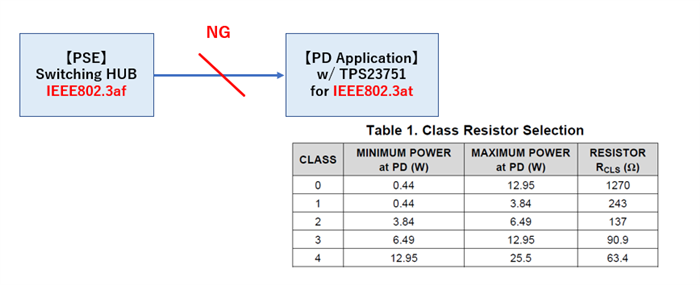Other Parts Discussed in Thread: TPS2375
Hi Team,
We understand that TPS23751 is a suitable device for IEEE 802.3at.
Therefore, TPS23751 can’t use for IEEE 802.3af PSE even if set CLASS0 to 3(less than 25.5W).
Is my understanding correct?
And, we understand that TPS2375 is a suitable device for IEEE 802.3af.
Could you please let us know if you have any recommended device?
[Image]
Regards,
Hide


